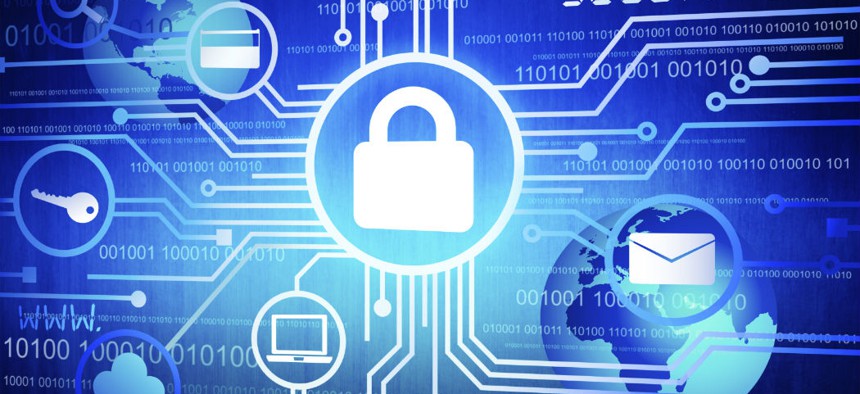Air Force: Cyber security extends beyond IT
Cybersecurity for the Air Force is no longer restricted primarily to IT but also increasingly pertinent to large platforms and networked weapons systems.
The Air Force is working to “operationalize” cybersecurity initiatives by widening the aperture regarding what systems and platforms need to be examined and protected, service leaders said.
Cybersecurity for the Air Force is no longer mostly restricted to IT but now also focuses on large platforms and networked weapons systems, Peter Kim, the Air Force’s Chief Information Security Officer, said Dec. 13, at an Armed Forces Communications and Electronics Association (AFCEA) event in Northern Va.
While Kim did not go into detail regarding the technical cybersecurity specifics of large platforms, he did cite the F-35 Joint Strike Fighter as an example of a system increasingly cyber “networked” and need of strong cyber defenses.
“We need to focus on cyber defense and cybersecurity beyond what we have traditionally done,” Kim said. “Threats are changing, and this is not the environment we grew up in. How do we approach the domain of cyberspace beyond what we are thinking about with IT?”
It is important to approach cyberspace as a vast interconnected domain, increasingly in need of cyber protections, he said. The fact that large weapons systems are reliant upon computer networks is well known. However, the speed with which computer technology is accelerating, and complicating the threat landscape, calls for more advanced cyber defense across a much wider spectrum of military systems.
Speaking of the need for “mission assurance” for large platforms, Kim said algorithms needed to facilitate the F-35’s much discussed “sensor fusion” require integrating disparate computer networks by synthesizing input from a range of different sensors onto a single screen for the pilot.
The concept, referred to as the early phases of human-machine interface and artificial intelligence, is a high-tech method of combining targeting information, digital map displays and radar warning information on a single screen for the pilot.
Computer technology increasingly organizes, integrates and presents information for pilots with an improved efficiency and graphical user interface. Developers often refer to this as “easing” the cognitive burden so that the dynamic human mind can better direct its energy toward tasks it is uniquely able to perform, such as problem solving.
Systems on the F-35 engineered for greater levels of automation include the Autonomic Logistics Information System, or ALIS – a logistics and sustainment computer which, among other things, assesses health and maintenance of avionics, engine systems and other aircraft functions. The idea is to replace the necessity of manual checks by engineering computers able to perform more systematic functions on their own.
The F-35’s Distributed Aperture System, a suite of sensors around the aircraft that provides pilots a 360-degree view of the battlespace, is another example of advanced computer integration. The aircraft’s Electro-Optical Targeting System, or EOTs, is in the same category.
As a result, “baking” cybersecurity into the construction of emerging platforms is a key priority, Kim emphasized.
“How do we start building in resiliency? When something touches a weapons system, it will touch a network,” Kim said.
Recognizing the importance of this kind of cyber integration, he said, is a necessary ingredient to protect weapons systems and mission systems. This means getting into the command and control aspects of cyber operations.
The B-2 stealth bomber, now undergoing a major computer processing upgrade, is yet another example of how cyber technology is increasingly vital to larger weapons systems. The B-2 is in the midst of engineering a new Defensive Management System tailored to help aircraft crews identify the location of air defenses it seeks to avoid.
Kim described man-machine interface as an important aspect of the so-called “Third Offset,” the term Pentagon science and technology experts use for the program that emphasizes innovation as a means of sustaining U.S. technological superiority over potential adversaries.
The concept of further “operationalizing” cybersecurity was also emphasized at AFCEA by Col. Robert Cole, Director Air Force Cyber Forward.
Cole stressed the importance of extending network and cyber protections into the tactical environment, such as adding additional security and information assurance to drone video feeds, among other things.
“We need to support the combatant commander more than we have in the past,” Cole said.
To this end, the Air Force is also in the early phases of standing up a new “cyber mission force” designed to identify methods of better securing combat mission systems.
NEXT STORY: 'Gap filler' GPS upgrades advance





